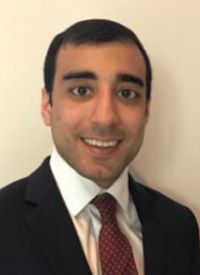News
Article
Deep Dive into a Case Study on Liver-Sparing TBI Plus Helical Tomotherapy in Relapsed Pre-B Cell ALL
Author(s):
A case study of a patient with pre-B cell acute lymphoblastic leukemia showed helical tomotherapy with IMRT-based TBI is a viable option for organ sparing.
Romy Megahed, MD

Helical tomotherapy with intensity-modulated radiation therapy (IMRT)–based total body irradiation (TBI) is a viable option for organ sparing, according to findings from a case study of a patient with pre-B cell acute lymphoblastic leukemia (Pre-B ALL) presented at the 2024 ACRO Summit.1
The case study of a 23-year-old male patient who successfully underwent liver-sparing TBI and hematopoietic stem cell transplantation (HSCT) further demonstrated that myeloablative TBI is an important technique used as a component of curative therapy in select hematologic malignancies.
“Liver toxicity is an uncommon but reported complication of TBI, [and] the risk may be higher in patients with hepatic parenchymal disease and iron overload,” Romy J. Megahed, MD, a resident in the Department of Radiation Oncology at the University of Arkansas for Medical Sciences in Little Rock, and coauthors, wrote in a poster presentation of the case study. “In this context, we present the first case of liver-sparing TBI with helical tomotherapy using [an] IMRT technique.”
Investigators first saw the patient after he presented to the clinic for evaluation of myeloablative TBI prior to allogeneic stem cell transplant (ASCT), and following a multidisciplinary discussion, clinicians decided to shield the patient’s liver during TBI since he had a history of iron overload and parenchymal liver disease. They noted that shielding the kidneys and lungs is common; however, select situations may also require that clinicians shield further organs, including the liver.
The patient’s liver volume was 1616 cc, and the mean dose to the liver was 5.89 Gy, which was below the case study’s 9 Gy constraint. The maximum liver dose received was 11.09 Gy, and the minimum dose was 3.91 Gy.
“The plan was comprised of an upper and lower IMRT with clinical target volume delineated as the entire body with the liver subtracted. The prescription dose was 12 Gy in 8 fractions at 1.5 Gy [per] fraction, delivered twice daily over the course of 4 consecutive days, with stem cell transplantation scheduled for the fifth day,” Megahed explained.
Following a successful liver-sparing TBI and HSCT, the patient had no evidence of disease 153 days post-transplant. The patient developed graft-vs-host disease and pancytopenia. However, investigators noted the patient was without evidence of liver toxicity, and the his liver function tests are mildly elevated.1
In addition to liver-sparing TBI techniques, other investigators have also examined the role of TBI for myeloablative ASCT in other sectors of ALL—regarding high-dose treatment in particular—which may result in increased short- and long-term adverse effects following transplantation.2
Data from a randomized phase 3 trial (NCT02670252) published in the Journal of Clinical Oncology in 2023 found that busulfan plus cyclophosphamide was noninferior in efficacy and safety to TBI plus cyclophosphamide conditioning for patients with standard-risk B-cell ALL in first complete remission undergoing HLA-matched ASCT. The 2-year overall survival rates were 76.6% (95% CI, 71.7%-81.8%) in the busulfan plus cyclophosphamide arm (n = 273) and 79.4% (95% CI, 74.7%-84.4%) in the TBI plus cyclophosphamide arm (n = 272), translating to a difference of 2.9% (95% CI, –4.1% to 9.8%; P = .022). The 2-year relapse rates were 20.2% (95% CI, 15.6%-25.1%) vs 18.4% (14.0%-23.2%; P = .616), respectively,3 and investigators have hypothesized these data may support busulfan plus cyclophosphamide as an additional option for patients with standard-risk B-cell ALL.2
References
- Megahed RJ, Gholami S, Wurtz, Ellison C, and Lewis GD. Liver-sparing total body irradiation with helical tomotherapy for relapsed pre-B cell ALL. Presented at: 2024 ACRO Annual Meeting; March 13-16, 2024; Orlando, FL.
- Jackson C, Muffy L. Total body irradiation for myeloablative allogeneic hematopoietic transplantation in acute lymphoblastic leukemia: how important is it really? The Hematologist. 2023;20(3). doi:10.1182/hem.V20.3.202333
- Zhang H, Fan Z, Huang F, et al. Busulfan plus cyclophosphamide versus total body irradiation plus cyclophosphamide for adults acute b lymphoblastic leukemia: an open-label, multicenter, phase III trial. J Clin Oncol. 2023;41(2):343-353. doi:10.1200/JCO.22.00767









